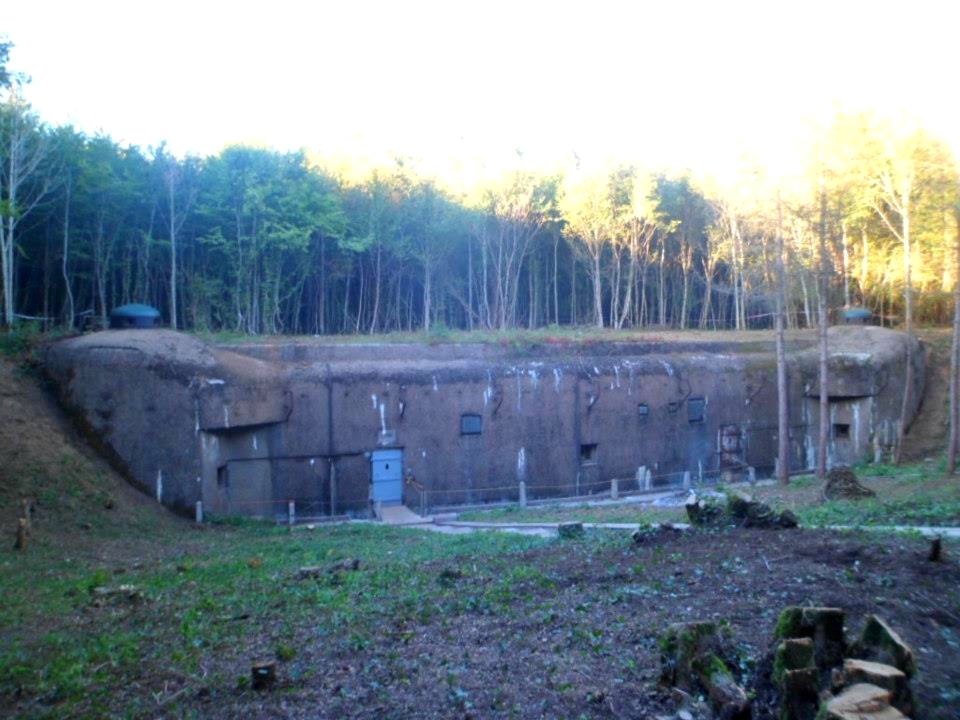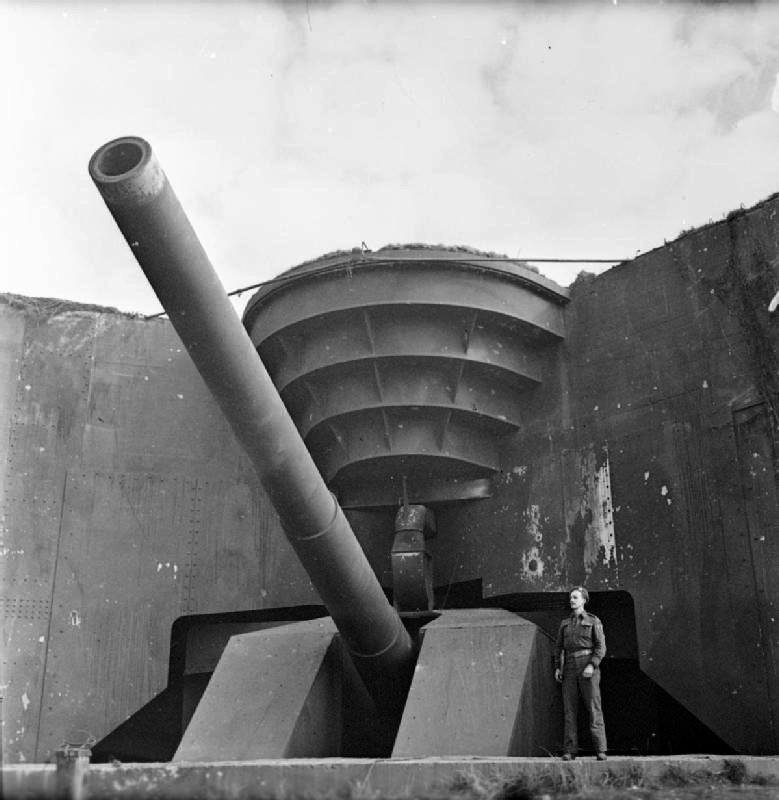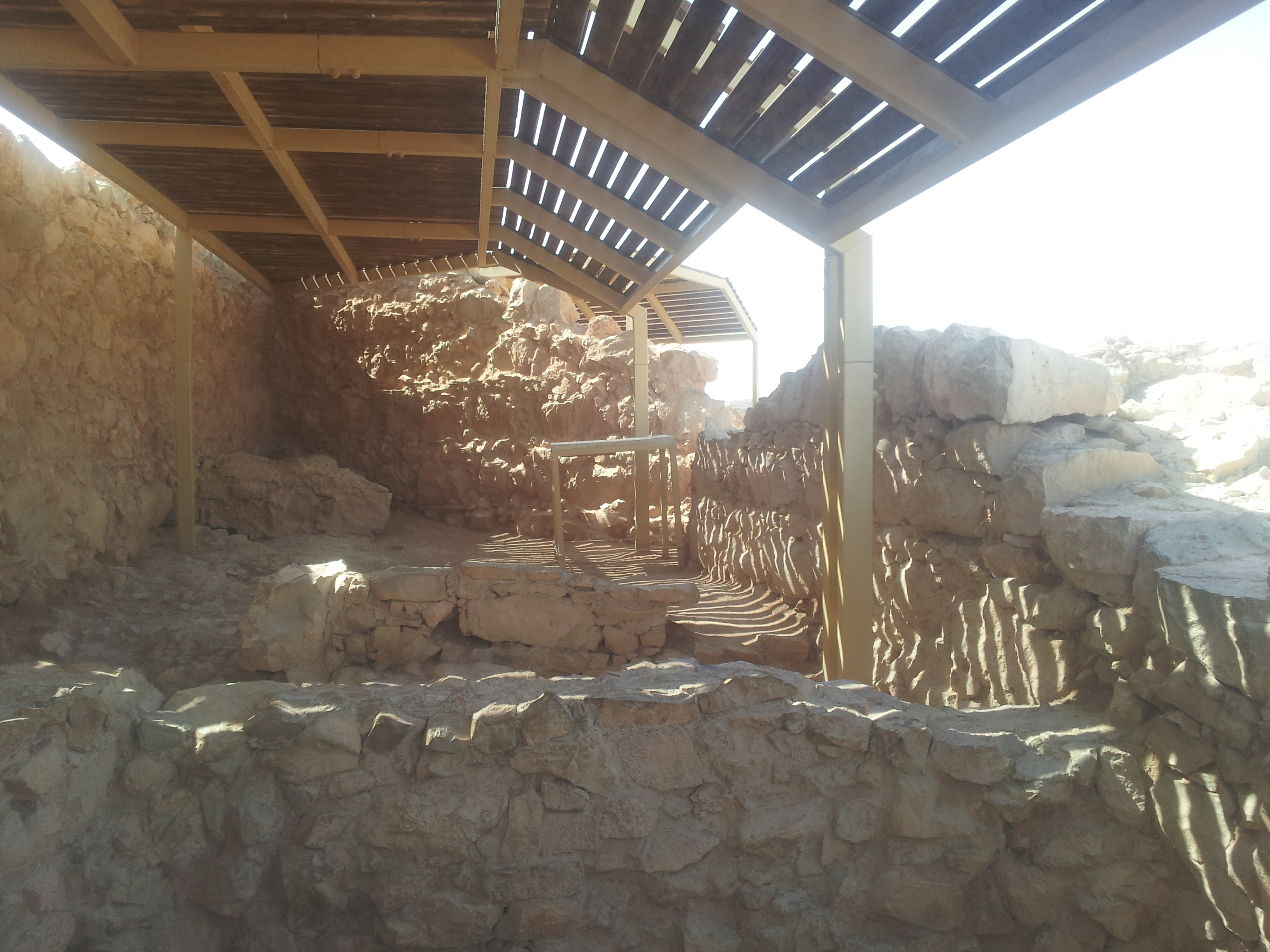|
Ouvrage Aumetz
Ouvrage Aumetz is a small work, or ''petit ouvrage'' of the Maginot Line. It is part of the Fortified Sector of the Crusnes and is located near the community of Aumetz in the Moselle (département), Moselle ''département'' of France. The ''petit ouvrage'' flanked by the ''gros ouvrages'' Ouvrage Brehain, Bréhain and Ouvrage Rochonvillers, Rochonvillers, all facing the France-Luxembourg border. Aumetz was initially planned as a ''gros ouvrage'' of six combat blocks, but only three infantry blocks were built. Aumetz saw limited action during the Battle of France. In the 1970s it was the first Maginot position to be offered for sale to the public. Design and construction Aumetz was planned as part of the second series of Maginot fortifications, with planning beginning in 1930 and construction in 1931. Initially planned as a ''gros ouvrage'' with three infantry blocks and three artillery blocks, the project was scaled back to just the infantry blocks, with entry blocks and artille ... [...More Info...] [...Related Items...] OR: [Wikipedia] [Google] [Baidu] |
Maginot Line
The Maginot Line (; ), named after the Minister of War (France), French Minister of War André Maginot, is a line of concrete fortifications, obstacles and weapon installations built by French Third Republic, France in the 1930s to deter invasion by Nazi Germany and force them to move around the fortifications. It was impervious to most forms of attack; consequently, the Germans invaded through the Low Countries in 1940, passing it to the north. The line, which was supposed to be fully extended further towards the west to avoid such an occurrence, was finally scaled back in response to demands from Belgium. Indeed, Belgium feared it would be sacrificed in the event of another German invasion. The line has since become a metaphor for expensive efforts that offer a false sense of security. Constructed on the French side of its borders with Kingdom of Italy, Italy, Switzerland, Nazi Germany, Germany, Luxembourg and Belgium, the line did not extend to the English Channel. French st ... [...More Info...] [...Related Items...] OR: [Wikipedia] [Google] [Baidu] |
AC 47 Anti-tank Gun
The AC 47 was a French anti-tank gun of 47 mm calibre. It was principally used in the ''ouvrages'' and casemates of the Maginot Line The Maginot Line (; ), named after the Minister of War (France), French Minister of War André Maginot, is a line of concrete fortifications, obstacles and weapon installations built by French Third Republic, France in the 1930s to deter invas ... in the late 1930s; another version was created for naval use. AC stands for anti-char, char being French for "tank". The AC 47 was principally used as a defensive weapon, since its portability was intentionally limited to prevent the weapon from being turned on defending troops if a fortification was captured. Characteristics * Length of the tube : 2.52 m (8.26 ft) * Rifling: 16, right-handed * Penetration: At an incidence of 30° it could penetrate 77 mm of armour at 500 metres and 56 mm at 1000 metres. See also * 47 mm APX anti-tank gun References Sources * Wor ... [...More Info...] [...Related Items...] OR: [Wikipedia] [Google] [Baidu] |
Czechoslovak Border Fortifications
First Republic of Czechoslovakia, Czechoslovakia built a system of border fortifications as well as some fortified defensive lines inland, from 1935 to 1938 as a defensive countermeasure against the rising threat of Nazi Germany. The objective of the fortifications was to prevent the taking of key areas by an enemy—not only Germany but also Kingdom of Hungary (1920–1946), Hungary and Second Polish Republic, Poland—by means of a sudden attack before the mobilization of the Czechoslovak Army could be completed, and to enable effective defense until allies—United Kingdom, Britain and French Third Republic, France, and possibly the Soviet Union—could help. History With the rise of Hitler and his Heim ins Reich, demands for unification of German minorities, including the Sudeten Germans, and the return of other claimed territories—Sudetenland—the alarmed Czechoslovak leadership began defensive plans. While some basic defensive structures were built early on, it was not un ... [...More Info...] [...Related Items...] OR: [Wikipedia] [Google] [Baidu] |
Atlantic Wall
The Atlantic Wall () was an extensive system of coastal defence and fortification, coastal defences and fortifications built by Nazi Germany between 1942 and 1944 along the coast of continental Europe and Scandinavia as a defense (military), defence against an anticipated Operation Overlord, Allied invasion of Nazi-occupied Europe from the United Kingdom, during World War II. The manning and operation of the Atlantic Wall was administratively overseen by the German Army (Wehrmacht), German Army, with some support from ''Luftwaffe'' ground forces. The ''Kriegsmarine'' (German Navy) maintained a separate coastal defence network, organised into a number of sea defence zones. Hitler ordered the construction of the fortifications in 1942 through his Führer Directive No. 40. More than half a million French people, French workers were drafted to build it. The wall was frequently mentioned in Nazi propaganda, where its size and strength were usually exaggerated. The fortifications i ... [...More Info...] [...Related Items...] OR: [Wikipedia] [Google] [Baidu] |
Siegfried Line
The Siegfried Line, known in German as the ''Westwall (= western bulwark)'', was a German defensive line built during the late 1930s. Started in 1936, opposite the French Maginot Line, it stretched more than from Kleve on the border with the Netherlands, along the western border of Nazi Germany, to the town of Weil am Rhein on the border with Switzerland. The line featured more than 18,000 bunkers, tunnels and tank traps. From September 1944 to March 1945, the Siegfried Line was subjected to a large-scale Allied offensive. Name The official German name for the defensive line construction program before and during the Second World War changed several times during the late 1930s. It came to be known as the "Westwall", but in English it was referred to as the "Siegfried Line" or, sometimes, the "West Wall". Various German names reflected different areas of construction: * Border Watch programme (pioneering programme) for the most advanced positions (1938) * Limes programme ... [...More Info...] [...Related Items...] OR: [Wikipedia] [Google] [Baidu] |
List Of Maginot Line Ouvrages
Here is the list of all ''ouvrages'' of the Maginot Line, organized by sector and type of fortification. ''Ouvrage'' translates as "works" in English: published documents in both English and French refer to these fortifications in this manner, rather than as "forts". An ''ouvrage'' typically consists of a series of concrete-encased strongpoints, linked by tunnels. For a list of the ''ouvrages'' of the Alpine Line, or Little Maginot Line, see List of Alpine Line ouvrages. Belgian border Fortified Sector of Flanders Fortified Sector of Lille Fortified Sector of the Escaut Ouvrage * Ouvrage d'Eth Casemates * Casemate de Tallandier * Casemate de Jeanlain * Casemate de Notre Dame d'Amour * Casemate du Mont des Bruyères * Casemate de la Ferme des Rosières * Casemate de Marlières * Casemate de Haute Rive * Casemate de Drève St Antoine * Casemate de Lièvre Ouest * Casemate de Lièvre Est * Casemate de Trieux d'Escaupont Ouest * Casemate de Trieux d'Escaupo ... [...More Info...] [...Related Items...] OR: [Wikipedia] [Google] [Baidu] |
Ouvrage Bois-du-Four
Ouvrage Bois-du-Four is a lesser work (''petit ouvrage'') in the Fortified Sector of the Crusnes of the Maginot Line. The ouvrage consists of a single large combat block without an underground gallery system, and is located between ''petit ouvrage'' Mauvais-Bois and ''gros ouvrage'' Bréhain, facing Luxembourg. A planned expansion, never carried out, was intended to enlarge Bois-du-Four into a fully equipped ''gros ouvrage''. Bois-du-Four saw little action in either the Battle of France in 1940 or the Lorraine Campaign of 1944. It is preserved by the community of Villers-la-Montagne and may be visited. Design and construction Bois-du-Four was approved for construction in May 1932. It was completed at a cost of 9 million francs by the contractor Monod of Paris.Mary, Tome 1, p. 52 It was designed as a unitary double casemate, occupying a prominent rise in a cleared area. In a second phase, Bois-du-Four was to be expanded to a plan that would result in a close resemblance t ... [...More Info...] [...Related Items...] OR: [Wikipedia] [Google] [Baidu] |
Ouvrage Mauvais-Bois
Ouvrage Mauvais-Bois is a ''petit ouvrage'' of the Fortified Sector of the Crusnes on the Maginot Line. It is located between the ''gros ouvrage'' Ouvrage Latiremont, Latiremont and the ''petit ouvrage'' Ouvrage Bois-du-Four, Bois-du-Four, facing the Belgium/Luxembourg border. The original plan for the position was for two phases of construction, resulting in a ''gros ouvrage'' provided with heavy artillery. The increase in tension between France and Germany in the late 1930s caused resources to be diverted elsewhere, and only the first three combat blocks were built. In 1940 the ''ouvrage'' was regularly bombarded, but not directly attacked by German infantry. When the French military divested itself of the majority of the Maginot fortifications, Mauvais-Bois was the second to be sold. Design and construction Mauvais-Bois was approved for construction in October 1931. It was completed at a cost of 11 million francs by the contractor Monod of Paris.Mary, Tome 1, p. 52 The init ... [...More Info...] [...Related Items...] OR: [Wikipedia] [Google] [Baidu] |
Second Armistice At Compiègne
The Armistice of 22 June 1940, sometimes referred to as the Second Armistice at Compiègne, was an agreement signed at 18:36 on 22 June 1940 near Compiègne, France by officials of Nazi Germany and the French Third Republic. It became effective at midnight on 25 June. Signatories for Germany included Wilhelm Keitel, a senior military officer of the Wehrmacht (the German armed forces), while those on the French side held lower ranks, including general Charles Huntziger. Following the decisive German victory in the Battle of France, the armistice established German military administration in occupied France during World War II, a German occupation zone in Northern and Western France that encompassed about three-fifths of Metropolitan France, France's European territory, including all English Channel and Atlantic Ocean ports. The remainder of the country was to be left unoccupied, although Vichy France, the new regime that replaced the Third Republic was mutually recognised as the l ... [...More Info...] [...Related Items...] OR: [Wikipedia] [Google] [Baidu] |
Casemate
A casemate is a fortified gun emplacement or armoured structure from which guns are fired, in a fortification, warship, or armoured fighting vehicle.Webster's New Collegiate Dictionary When referring to antiquity, the term "casemate wall" means a double city wall with the space between the walls separated into chambers, which could be filled up to better withstand battering rams in case of siege (see .) In its original early modern meaning, the term referred to a vaulted chamber in a fort, which may have been used for storage, accommodation, or artillery which could fire through an opening or embrasure. Although the outward faces of brick or masonry casemates proved vulnerable to advances in artillery performance, the invention of reinforced concrete allowed newer designs to be produced well into the 20th century. With the introduction of ironclad warships, the definition was widened to include a protected space for guns in a ship, either within the hull or in the low ... [...More Info...] [...Related Items...] OR: [Wikipedia] [Google] [Baidu] |
Abri X1
A rock shelter (also rockhouse, crepuscular cave, bluff shelter, or abri) is a shallow cave-like opening at the base of a bluff or cliff. In contrast to solutional caves (karst), which are often many miles long or wide, rock shelters are almost always modest in size and extent. Formation Rock shelters form because a Rock (geology), rock stratum such as sandstone that is resistant to erosion and weathering has formed a cliff or bluff, but a softer stratum, more subject to erosion and weathering, lies just below the resistant stratum, and thus undercuts the cliff. In arid areas, wind erosion (Aeolian erosion) can be an important factor in rockhouse formation. In most humid areas, the most important factor in rockhouse formation is frost weathering, frost spalling, where the softer, more porous rock underneath is pushed off, tiny pieces at a time, by frost expansion from water frozen in the pores. Erosion from moving water is seldom a significant factor. Many rock shelters are ... [...More Info...] [...Related Items...] OR: [Wikipedia] [Google] [Baidu] |
JM Cloche
The JM cloche was an element of the Maginot Line. It was a non-retractable non-rotating cupola of steel alloy like GFM cloches, but were armed with twin heavy machine guns, as opposed to the lighter automatic rifles associated with the GFM. There were 179 JM cloches on the Maginot Line The Maginot Line (; ), named after the Minister of War (France), French Minister of War André Maginot, is a line of concrete fortifications, obstacles and weapon installations built by French Third Republic, France in the 1930s to deter invas .... JM is an acronym for ''Jumelage de Mitrailleuses'' (twin machine guns). While the MAC 31 heavy machine guns were of the same caliber (7.5mm) as those in GFM cloches, they had a longer practical range and a maximum range of , with a 500 round per minute rate of fire.Mary, Tome 2, page 109 Description The JM cloche closely resembles the GFM cloche in size and construction. It exists in three versions, all designed Model 1930: small, large and two- ... [...More Info...] [...Related Items...] OR: [Wikipedia] [Google] [Baidu] |







